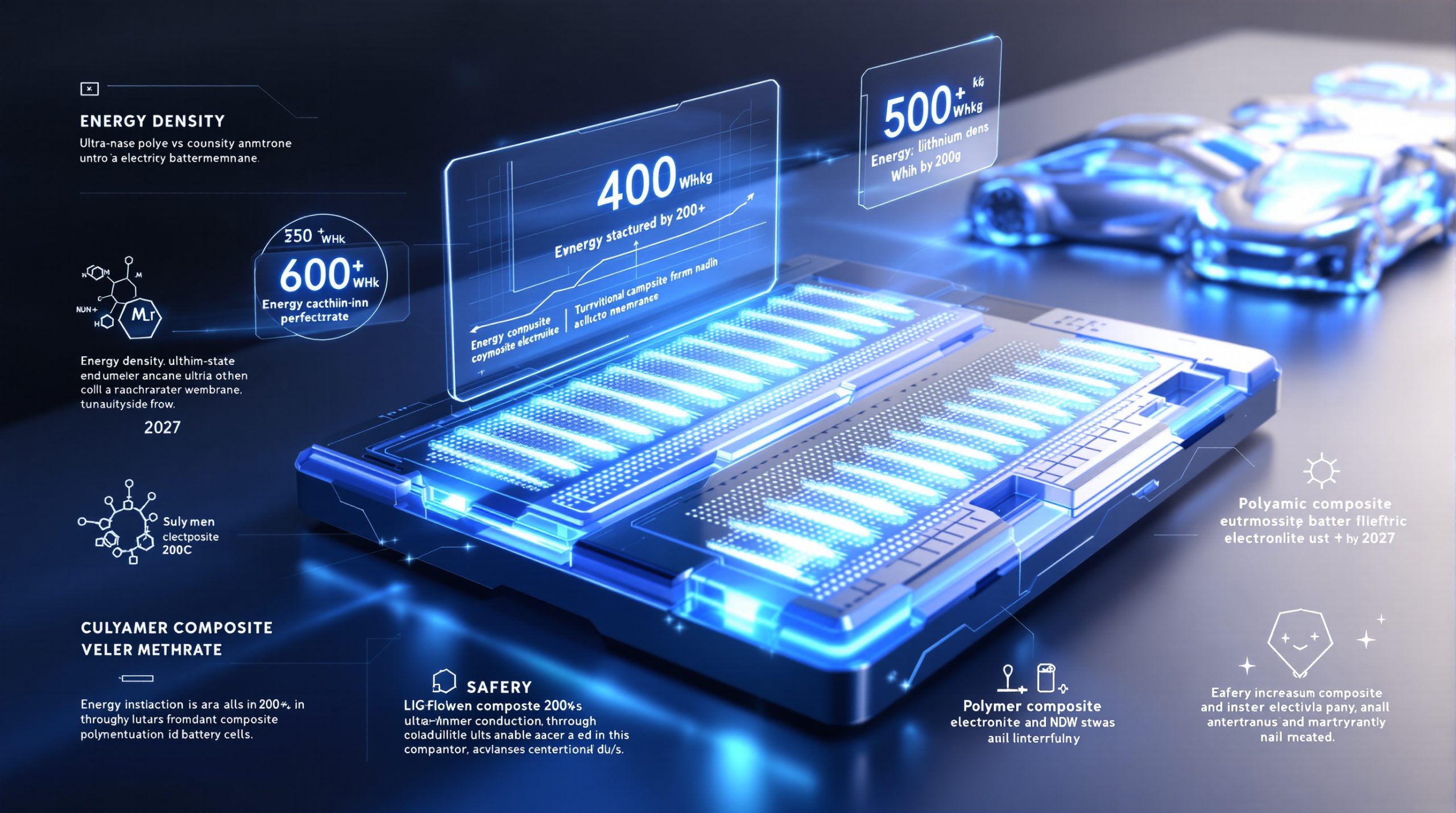The black mass payables methodology represents a critical pricing framework that enables fair value determination for this increasingly important battery recycling commodity. Furthermore, as electric vehicle adoption accelerates and regulatory frameworks strengthen recycling requirements, understanding these valuation approaches becomes essential for all market participants seeking to optimize their material recovery operations.
Understanding Black Mass and Its Economic Significance
Black mass represents the critical intermediate material produced when lithium-ion batteries undergo initial processing stages in recycling facilities. This dark, powder-like substance contains concentrated amounts of valuable metals including lithium, cobalt, nickel, and manganese that can be recovered and reintroduced into the battery supply chain. The economic significance of black mass has grown substantially as electric vehicles transforming mining operations and battery recycling becomes essential for sustainable energy storage solutions.
The material derives its name from its characteristic dark appearance, resulting from the mixture of various metal compounds and carbon-based materials present in battery cathodes. Battery recycling facilities generate black mass through mechanical processes that involve dismantling battery packs, crushing cell components, and separating materials to concentrate valuable metals while removing plastics, aluminium, and other non-target materials.
Market participants recognise black mass as a commodity that bridges the gap between waste battery materials and refined metal production. Processing facilities purchase this material from battery recyclers and recovery operators, then apply hydrometallurgical or pyrometallurgical techniques to extract individual metals for sale to battery manufacturers and chemical producers.
The Role of Payables in Recycling Economics
Payables represent the percentage of contained metal value that purchasers agree to pay sellers for black mass deliveries. This pricing mechanism accounts for the costs and risks associated with further processing, refining, and marketing recovered metals. The black mass payables methodology forms the foundation for determining fair compensation while balancing processing economics with material quality considerations.
Traditional metal concentrate trading established the conceptual framework for payables, where mining companies receive payments based on recoverable metal content rather than gross material weight. However, battery recycling markets have adopted similar approaches, recognising that black mass quality varies significantly depending on source materials, processing techniques, and handling procedures.
The payables system creates transparency in pricing by establishing standardised benchmarks tied to refined metal prices published by commodity exchanges and pricing agencies. Consequently, this connection ensures that black mass pricing reflects underlying metal market conditions while providing predictable valuation frameworks for both buyers and sellers.
Market Evolution and Current Valuation Trends
Battery recycling markets have experienced rapid development as regulatory frameworks strengthen and economic incentives improve for material recovery operations. Early market phases characterised by limited processing capacity and high costs have evolved toward more competitive environments with multiple processing options and improving recovery rates.
Current market conditions reflect growing supply availability as electric vehicle penetration increases and first-generation battery systems reach end-of-life stages. In addition, recent developments like the battery recycling breakthrough demonstrate how technological advances are enhancing recovery efficiency rates, contributing to higher payable percentages for quality materials.
Geographic market development varies considerably, with Asian markets demonstrating the most mature pricing structures and highest payable rates, while North American and European markets continue developing standardised approaches. These regional differences create arbitrage opportunities while highlighting the importance of logistics costs and processing facility locations in overall economics.
How Are Black Mass Payables Calculated?
Metal-Specific Valuation Framework
The calculation methodology for black mass payables depends fundamentally on the battery chemistry composition of the source materials. Different battery types require distinct approaches to accurately reflect recoverable value and processing requirements.
NCM Chemistry Approach: Materials originating from Nickel Cobalt Manganese (NCM) batteries undergo separate percentage calculations for each primary metal component. Processors typically apply different payable rates for nickel content (ranging from 75-85%), cobalt content (80-90%), and manganese content (60-75%) based on recovery difficulty and market demand factors.
LFP Chemistry Methodology: Lithium Iron Phosphate (LFP) battery materials focus primarily on lithium recovery, with payables calculated on a per-percentage basis for lithium content. Industry standards typically range from $8-12 per percentage point of lithium content, subject to moisture and quality specifications.
Reference Price Benchmarking: All payable calculations link to established commodity price benchmarks, including London Metal Exchange (LME) prices for nickel, specialised cobalt pricing from market data providers, and lithium carbonate equivalent pricing from established indices. This connection ensures that black mass valuations reflect real-time market conditions for refined metal outputs.
Quality Assessment Parameters
Accurate quality assessment forms the cornerstone of reliable payable calculations, requiring standardised testing procedures and verification protocols to ensure fair pricing for all transaction participants.
Moisture Content Verification Protocols: Industry standards mandate maximum moisture content of 5% for standard-grade black mass materials. Testing procedures utilise gravimetric analysis techniques where representative samples undergo controlled heating to determine precise water content levels. Furthermore, portable moisture analysers provide preliminary assessments, while laboratory confirmation ensures accuracy for high-value transactions.
Metal Concentration Testing Procedures: X-ray fluorescence (XRF) spectroscopy provides initial metal content screening, followed by inductively coupled plasma (ICP) analysis for precise quantification of individual metal concentrations. Testing protocols require multiple sample points from material lots to account for composition variations and ensure representative analysis results.
Impurity Level Impact on Final Payables: Contamination from processing aids, foreign metals, and organic compounds can significantly reduce payable percentages. Common impurities include aluminium from housing materials, copper from current collectors, and various electrolyte residues. Penalty structures typically reduce payables by 2-5% for each percentage point of non-target material content above specified thresholds.
What Factors Influence Black Mass Payable Rates?
Regional Market Variations
| Region | Typical Payable Range | Key Drivers |
|---|---|---|
| Asia-Pacific | 75-90% | High recovery rates, strong demand |
| Europe | 65-80% | Processing efficiency, logistics costs |
| North America | 70-85% | Market maturity, regulatory factors |
Regional market conditions create substantial variations in black mass payable rates, reflecting differences in processing capacity, regulatory environments, and downstream demand characteristics. These variations present both opportunities and challenges for market participants seeking to optimise material placement.
Asia-Pacific Market Dynamics: The region's advanced processing infrastructure and established supply chains support higher payable rates through superior recovery efficiency and lower operating costs. For instance, proximity to battery manufacturing centres creates strong downstream demand, while government support for recycling initiatives provides regulatory stability that encourages investment in processing capacity expansion.
European Market Characteristics: Stringent environmental regulations drive higher processing costs while creating barriers to entry that limit competition among buyers. However, strong regulatory support for circular economy initiatives and extended producer responsibility requirements ensure steady material supply streams that support market development.
North American Market Development: Emerging processing capacity and growing electric vehicle adoption create improving conditions for payable rates, while logistics challenges and regulatory uncertainty contribute to market volatility. Government incentives for domestic battery supply chain development support long-term market growth prospects.
Material Quality Specifications
Quality specifications directly impact payable rates through their influence on processing costs, recovery rates, and final product quality. Standardised specifications help market participants understand value propositions while providing frameworks for quality-based pricing adjustments.
Moisture Content Standards: The industry-standard maximum 5% threshold reflects optimal processing conditions that balance material handling requirements with economic considerations. Excessive moisture content increases energy costs during processing while potentially causing handling difficulties and storage complications.
Chemical Composition Verification: Laboratory testing requirements include comprehensive analysis of target metals, impurity levels, and potential contaminants. Testing protocols typically require results from certified facilities using standardised analytical methods to ensure consistency and reliability across different market participants.
Physical Property Assessment: Particle size distribution affects processing efficiency and recovery rates, with optimal ranges typically falling between 0.1-5.0 millimetres for most processing technologies. Contamination levels from foreign materials, including plastics, metals, and organic compounds, require assessment to determine appropriate handling and processing approaches.
Market Dynamics and Pricing Pressures
Supply-demand balance effects create the primary driver for payable rate fluctuations, with periods of material scarcity supporting higher rates while abundant supply conditions pressure rates downward. Processing capacity constraints limit buyer competition during high-volume periods, while capacity expansion cycles can rapidly shift market dynamics.
Technology advancement impacts manifest through improved recovery rates that enable processors to offer higher payables while maintaining profitability. Innovations in hydrometallurgical processing, automated sorting systems, and purification technologies contribute to ongoing efficiency improvements that benefit both buyers and sellers.
Consequently, regulatory changes affecting battery design requirements, recycling mandates, and material specifications create longer-term structural shifts in market conditions. Extended producer responsibility legislation increases material supply reliability, while battery chemistry transitions influence relative demand for different metal recoveries.
Why Do Moisture Limits Matter in Payable Calculations?
The 5% Moisture Threshold Explained
The industry-standard 5% maximum moisture content requirement reflects practical considerations related to processing efficiency, material handling, and economic optimisation. This threshold balances reasonable material preparation requirements with processing cost considerations that ultimately benefit both buyers and sellers through improved transaction economics.
Processing facilities require controlled moisture levels to optimise energy consumption during thermal treatment stages and ensure consistent material flow through mechanical handling systems. Furthermore, excessive moisture content increases drying costs, extends processing times, and can create handling difficulties that reduce overall facility efficiency.
The 5% threshold also provides a practical balance between material preparation requirements and the natural moisture absorption tendencies of black mass materials. Achieving significantly lower moisture levels often requires specialised drying equipment and controlled storage conditions that may not justify additional costs for many market participants.
Quality assurance considerations support standardised moisture limits by providing clear specifications that reduce transaction disputes and enable consistent evaluation procedures. Standardised testing methods using gravimetric analysis ensure reliable measurement procedures that support fair pricing determination.
Moisture Penalty Structures
Discount Mechanisms: Industry practice applies 10-25% penalties for materials exceeding moisture content specifications, with penalty severity typically increasing proportionally to excess moisture levels. These penalty structures reflect the additional processing costs and risks associated with handling higher-moisture materials.
Testing Methodologies: Gravimetric analysis provides the standard approach for moisture determination, involving controlled heating of representative samples to constant weight at specified temperatures. Portable analysers offer preliminary assessment capabilities for rapid screening, while laboratory confirmation ensures accuracy for final pricing determinations.
Third-Party Verification: Independent assessment protocols help resolve disputes and provide neutral evaluation services for high-value transactions. Certified laboratories offer standardised testing procedures that ensure consistent results across different market participants and geographic regions.
Regional Differences in Black Mass Payable Methodologies
Asian Market Characteristics
Asian markets demonstrate the most developed black mass payables methodology, supported by advanced processing technology and streamlined logistics infrastructure. Higher payable rates ranging from 75-90% reflect superior recovery rates achieved through state-of-the-art processing facilities and optimised supply chain management.
Processing technology advantages include advanced hydrometallurgical systems, automated material handling equipment, and integrated refining capabilities that maximise metal recovery while minimising processing costs. These technological advantages enable processors to offer competitive payable rates while maintaining profitability.
Strong downstream demand from battery manufacturers creates robust market conditions that support stable pricing and encourage continued investment in processing capacity expansion. For example, developments like the new battery-grade lithium refinery demonstrate how regional capacity expansion supports market growth.
European and North American Approaches
European markets emphasise regulatory compliance and environmental standards that influence payable methodologies through their impact on processing costs and operational requirements. Stringent environmental regulations require advanced pollution control systems and waste management procedures that increase operating expenses while ensuring sustainable processing practices.
North American market development continues progressing with government incentives supporting domestic processing capacity expansion and supply chain development. However, regulatory uncertainty and evolving standards create challenges for standardised methodology development, while growing electric vehicle adoption supports improving market conditions.
Transportation and logistics considerations significantly influence regional payable rates through their impact on delivered costs and material quality preservation. European markets benefit from established transportation networks and relatively short distances between material sources and processing facilities, while North American markets face greater geographic challenges.
Pricing Transparency Initiatives
Industry standardisation efforts focus on developing consistent quality specifications, testing procedures, and pricing methodologies that reduce transaction costs and improve market efficiency. Trade associations and industry groups collaborate on establishing best practices that benefit all market participants.
Benchmark publication methodologies continue evolving as markets mature and transaction volumes increase. Price reporting agencies work with industry participants to develop transparent pricing mechanisms that reflect actual market conditions while providing reliable reference points for contract negotiations.
Market data collection practices improve through enhanced reporting systems and increased participant cooperation in sharing transaction information. These improvements support more accurate price discovery and better understanding of market trends that benefit both buyers and sellers.
Common Challenges in Black Mass Payable Assessment
Material Variability Issues
Chemistry-specific evaluation complexities arise from the diverse range of battery types and compositions entering recycling streams. Different cathode chemistries require distinct processing approaches and yield varying recovery rates, making standardised payable methodologies challenging to implement across all material types.
Source material quality inconsistencies reflect differences in battery age, usage patterns, and pre-processing procedures that affect metal concentrations and impurity levels. Manufacturing scrap materials typically exhibit higher quality and consistency compared to end-of-life batteries that have undergone various usage and storage conditions.
Processing scrap versus end-of-life battery differences create distinct market segments with separate pricing considerations. Manufacturing scrap materials often command premium payables due to known compositions and minimal contamination, while end-of-life materials require more extensive evaluation and processing to achieve similar recovery rates.
Testing and Verification Protocols
Key Insight: Accurate moisture and metal content verification requires standardised testing procedures to ensure fair pricing and reduce transaction disputes.
Standardised testing procedures face challenges from equipment variations, analytical method differences, and sample preparation inconsistencies that can affect measurement accuracy. Industry efforts focus on establishing unified protocols that provide reliable results regardless of testing facility or equipment used.
Sample representation issues arise from material heterogeneity and the difficulty of obtaining truly representative samples from large material lots. Proper sampling procedures require multiple collection points, appropriate sample sizes, and careful handling to ensure analytical results accurately reflect bulk material composition.
Third-party verification services help address accuracy concerns while providing neutral assessment capabilities for disputed transactions. Certified laboratories offer standardised procedures and quality assurance programmes that support consistent evaluation across different market participants.
Market Maturity Limitations
Limited historical pricing data constrains the development of sophisticated valuation models and trend analysis capabilities that support informed decision-making. As markets mature and transaction volumes increase, improved data availability will enable more refined pricing methodologies.
Negotiation-based pricing prevalence reflects market conditions where standardised benchmarks remain limited and many transactions involve customised terms based on specific material characteristics and processing requirements. This situation creates challenges for price transparency while potentially disadvantaging smaller market participants.
Specialty material handling requirements for unique battery chemistries or contaminated materials create additional complexity in payable assessment. These materials may require specialised processing techniques or additional purification steps that affect economic calculations and pricing structures.
Future Developments in Payable Methodologies
Technology Integration Opportunities
Automated quality assessment systems utilising advanced analytical technologies promise to improve accuracy while reducing evaluation costs and timeframes. Real-time composition analysis using portable XRF equipment and rapid moisture determination systems enable faster transaction processing and improved material characterisation.
Real-time pricing adjustment mechanisms could provide dynamic payable calculations that reflect current market conditions and material specifications more accurately than periodic price updates. Integration with commodity price feeds and automated quality assessments would enable continuous pricing optimisation.
Blockchain-based transaction verification systems offer potential solutions for improving transparency and reducing disputes through immutable record-keeping and automated contract execution capabilities. These technologies could streamline transaction processing while providing enhanced security and accountability.
Standardisation Efforts
Industry-wide specification development continues progressing through collaboration between recyclers, processors, and end-users seeking to establish consistent quality standards and testing procedures. These efforts aim to reduce transaction costs while improving market efficiency and transparency.
Regulatory framework evolution influences standardisation through extended producer responsibility requirements and recycling mandates that create incentives for improved material quality and processing efficiency. Furthermore, government initiatives like Australia's critical minerals strategic reserve demonstrate how policy support accelerates development and adoption of unified approaches.
International harmonisation initiatives seek to align different regional approaches while respecting local market conditions and regulatory requirements. These efforts could facilitate international trade and improve market liquidity through reduced barriers and increased participant confidence.
Market Growth Implications
Scaling effects on payable rates reflect the relationship between processing volumes and unit costs, with higher throughput facilities typically achieving better economics that enable improved payable offerings. Continued capacity expansion and efficiency improvements should support gradually improving payable rates.
Competition impact on pricing structures manifests through increased processing capacity and greater buyer competition that benefits sellers through improved terms and pricing options. Market development toward more competitive conditions should reduce pricing disparities and improve overall market efficiency.
Investment flow influences on methodology refinement reflect capital deployment toward advanced processing technologies and capacity expansion that enhance recovery rates and reduce operating costs. The growing battery metals investment landscape ultimately benefits both buyers and sellers through better economics and improved transaction terms.
Best Practices for Black Mass Payable Negotiations
Pre-Transaction Preparation
Comprehensive material testing protocols ensure accurate characterisation and fair pricing determination while reducing dispute potential. Recommended testing includes:
- Complete metal composition analysis using certified laboratory procedures
- Moisture content determination through gravimetric analysis
- Impurity level assessment for non-target materials
- Physical property evaluation including particle size distribution
- Representative sampling from multiple lot locations
Market price research and benchmarking provide essential context for negotiating competitive terms while understanding current market conditions. Regular monitoring of commodity prices, payable rate trends, and regional market developments supports informed decision-making.
Quality documentation requirements include maintaining detailed records of material sources, processing procedures, and analytical results that support pricing negotiations and quality claims. Proper documentation reduces transaction risks while facilitating dispute resolution procedures.
Contract Structuring Considerations
Moisture penalty clause specifications should clearly define measurement procedures, acceptable limits, and penalty calculations to avoid disputes and ensure fair treatment. Standard clauses typically include:
- Maximum moisture content limits (typically 5%)
- Testing methodology specifications
- Penalty calculation procedures for excess moisture
- Dispute resolution mechanisms for measurement disagreements
Metal content guarantee provisions protect both parties through clear specifications of expected compositions and procedures for handling deviations from guaranteed levels. These provisions should address sampling procedures, analytical methods, and adjustment mechanisms for composition variations.
Price adjustment mechanism definitions ensure fair treatment when market conditions change between contract execution and material delivery. Mechanisms should specify benchmark prices, adjustment frequencies, and calculation procedures for price modifications.
Risk Management Strategies
Quality assurance verification steps minimise risks associated with material quality variations and analytical uncertainties. Recommended approaches include third-party testing, split sample procedures, and certified laboratory confirmation for high-value transactions.
Payment term optimisation balances cash flow considerations with transaction security requirements. Standard practices include staged payments based on analytical confirmation, letters of credit for international transactions, and escrow arrangements for disputed materials.
Dispute resolution procedures provide structured approaches for addressing disagreements while maintaining business relationships and minimising transaction costs. Effective procedures typically include negotiation requirements, mediation options, and arbitration mechanisms for unresolved disputes.
Frequently Asked Questions About Black Mass Payables
How Often Do Payable Rates Change?
Black mass payable rates fluctuate based on underlying commodity price movements, supply-demand conditions, and processing cost variations. Most processors review payable rates monthly or quarterly, while some operations adjust rates more frequently during volatile market periods.
Market conditions significantly influence adjustment frequencies, with periods of high volatility leading to more frequent rate changes while stable conditions may result in longer rate periods. Processors typically provide advance notice of rate changes to maintain transparency and support planning activities.
What Documentation Is Required for Transactions?
Standard transaction documentation includes:
- Material analysis reports from certified laboratories
- Chain of custody documentation showing material origins
- Transportation and handling records
- Quality certificates confirming moisture and composition specifications
- Insurance documentation for high-value shipments
Additional documentation may be required for international transactions, including export permits, customs declarations, and regulatory compliance certificates. Proper documentation ensures smooth transaction processing while reducing regulatory and commercial risks.
How Are Disputes Over Metal Content Resolved?
Industry standard practices utilise umpire procedures where disputed materials undergo analysis by mutually agreed independent laboratories. Results from umpire analyses typically determine final pricing adjustments with costs shared between transaction parties.
Resolution timelines vary based on dispute complexity and analytical requirements, with simple composition disagreements often resolved within 2-3 weeks while complex contamination issues may require longer investigation periods.
What Impact Do Market Conditions Have on Payables?
Market conditions create the primary driver for payable rate variations through their influence on supply-demand balance and processing economics. Strong metal prices and limited material supply typically support higher payable rates, while abundant supply and weak demand create downward pressure on rates.
Processing capacity utilisation significantly affects payable rates, with high utilisation periods enabling processors to offer competitive rates while excess capacity situations may pressure rates downward. Regional differences in capacity utilisation create geographic pricing variations that influence material flow patterns.
Furthermore, understanding market dynamics requires consideration of broader trends in black mass quality standards that influence transaction terms and pricing structures across different material grades and specifications.
Disclaimer: This article provides general information about black mass payables methodology and should not be considered as investment, legal, or professional advice. Market conditions, pricing structures, and regulatory requirements may vary significantly by region and continue evolving as the battery recycling industry develops. Readers should conduct their own research and consult with qualified professionals before making business decisions based on this information.
The information presented reflects industry practices and market conditions as of October 2025 and may not reflect future developments or changes in methodology, regulation, or market structure. Pricing examples and ranges are illustrative and may not represent current market conditions in all regions.
Ready to Stay Ahead of the Next Battery Metals Breakthrough?
Discovery Alert's proprietary Discovery IQ model delivers real-time alerts on significant ASX mineral discoveries, instantly empowering subscribers to identify actionable opportunities in battery metals and critical minerals ahead of the broader market. Begin your 30-day free trial today and secure your market-leading advantage as the battery recycling sector continues evolving.




